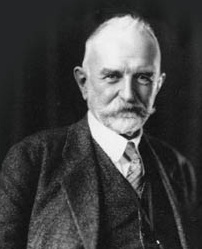|
Performative Interval
The performative interval in sociology refers to a unit of analysis in the interaction order defined by the disjunct between practice and the self, or between what an actor "does" and what an actor "is". The concept is developed by sociologist Adam Isaiah Green, University of Toronto, as a heuristic device to illustrate the irreducibility of the self to a social category in symbolic interactionist and queer theory renderings of the subject (Green 2007). In Green's reflection on these two latter literatures, the actor "acts toward" a given social category — be it a racial, ethnic, gender or sexual orientation classification — through aligning behavior, affect and the body with norms that define the category. Nevertheless, the category is never fully realized in the self, an insight that builds directly on Judith Butler's (1997) conception of "performative failure" (for more, see the concept of performativity), but also on the earlier sociological work of Mead and Goffman, amon ... [...More Info...] [...Related Items...] OR: [Wikipedia] [Google] [Baidu] |
Sociology
Sociology is a social science that focuses on society, human social behavior, patterns of social relationships, social interaction, and aspects of culture associated with everyday life. It uses various methods of empirical investigation and critical analysis to develop a body of knowledge about social order and social change. While some sociologists conduct research that may be applied directly to social policy and welfare, others focus primarily on refining the theoretical understanding of social processes and phenomenological method. Subject matter can range from micro-level analyses of society (i.e. of individual interaction and agency) to macro-level analyses (i.e. of social systems and social structure). Traditional focuses of sociology include social stratification, social class, social mobility, religion, secularization, law, sexuality, gender, and deviance. As all spheres of human activity are affected by the interplay between social structure and ind ... [...More Info...] [...Related Items...] OR: [Wikipedia] [Google] [Baidu] |
University Of Toronto
The University of Toronto (UToronto or U of T) is a public university, public research university in Toronto, Ontario, Canada, located on the grounds that surround Queen's Park (Toronto), Queen's Park. It was founded by royal charter in 1827 as King's College, the first institution of higher learning in Upper Canada. Originally controlled by the Church of England, the university assumed its present name in 1850 upon becoming a secular institution. As a collegiate university, it comprises eleven colleges each with substantial autonomy on financial and institutional affairs and significant differences in character and history. The university maintains three campuses, the oldest of which, St. George, is located in downtown Toronto. The other two satellite campuses are located in University of Toronto Scarborough, Scarborough and University of Toronto Mississauga, Mississauga. The University of Toronto offers over 700 undergraduate and 200 graduate programs. In all major ranking ... [...More Info...] [...Related Items...] OR: [Wikipedia] [Google] [Baidu] |
Heuristic
A heuristic (; ), or heuristic technique, is any approach to problem solving or self-discovery that employs a practical method that is not guaranteed to be optimal, perfect, or rational, but is nevertheless sufficient for reaching an immediate, short-term goal or approximation. Where finding an optimal solution is impossible or impractical, heuristic methods can be used to speed up the process of finding a satisfactory solution. Heuristics can be mental shortcuts that ease the cognitive load of making a decision. Examples that employ heuristics include using trial and error, a rule of thumb or an educated guess. Heuristics are the strategies derived from previous experiences with similar problems. These strategies depend on using readily accessible, though loosely applicable, information to control problem solving in human beings, machines and abstract issues. When an individual applies a heuristic in practice, it generally performs as expected. However it can alternativ ... [...More Info...] [...Related Items...] OR: [Wikipedia] [Google] [Baidu] |
Symbolic Interactionist
Symbolic interactionism is a sociological theory that develops from practical considerations and alludes to particular effects of communication and interaction in people to make images and normal implications, for deduction and correspondence with others. According to Macionis, symbolic interactionism is "a framework for building theory that sees society as the product of everyday interactions of individuals". In other words, it is a frame of reference to better understand how individuals interact with one another to create symbolic worlds, and in return, how these worlds shape individual behaviors. It is a framework that helps understand how society is preserved and created through repeated interactions between individuals. The interpretation process that occurs between interactions helps create and recreate meaning. It is the shared understanding and interpretations of meaning that affect the interaction between individuals. Individuals act on the premise of a shared understan ... [...More Info...] [...Related Items...] OR: [Wikipedia] [Google] [Baidu] |
Gender
Gender is the range of characteristics pertaining to femininity and masculinity and differentiating between them. Depending on the context, this may include sex-based social structures (i.e. gender roles) and gender identity. Most cultures use a gender binary, in which gender is divided into two categories, and people are considered part of one or the other ( boys/men and girls/ women);Kevin L. Nadal, ''The SAGE Encyclopedia of Psychology and Gender'' (2017, ), page 401: "Most cultures currently construct their societies based on the understanding of gender binary—the two gender categorizations (male and female). Such societies divide their population based on biological sex assigned to individuals at birth to begin the process of gender socialization." those who are outside these groups may fall under the umbrella term ''non-binary''. Some societies have specific genders besides "man" and "woman", such as the hijras of South Asia; these are often referred to as '' third g ... [...More Info...] [...Related Items...] OR: [Wikipedia] [Google] [Baidu] |
Sexual Orientation
Sexual orientation is an enduring pattern of romantic or sexual attraction (or a combination of these) to persons of the opposite sex or gender, the same sex or gender, or to both sexes or more than one gender. These attractions are generally subsumed under heterosexuality, homosexuality, and bisexuality, while asexuality (the lack of sexual attraction to others) is sometimes identified as the fourth category. These categories are aspects of the more nuanced nature of sexual identity and terminology. For example, people may use other labels, such as '' pansexual'' or '' polysexual'', or none at all. According to the American Psychological Association, sexual orientation "also refers to a person's sense of identity based on those attractions, related behaviors, and membership in a community of others who share those attractions". ''Androphilia'' and ''gynephilia'' are terms used in behavioral science to describe sexual orientation as an alternative to a gender binary conc ... [...More Info...] [...Related Items...] OR: [Wikipedia] [Google] [Baidu] |
Norm (sociology)
Social norms are shared standards of acceptable behavior by groups. Social norms can both be informal understandings that govern the behavior of members of a society, as well as be codified into rules and laws. Social normative influences or social norms, are deemed to be powerful drivers of human behavioural changes and well organized and incorporated by major theories which explain human behaviour. Institutions are composed of multiple norms. Norms are shared social beliefs about behavior; thus, they are distinct from "ideas", " attitudes", and " values", which can be held privately, and which do not necessarily concern behavior. Norms are contingent on context, social group, and historical circumstances. Scholars distinguish between regulative norms (which constrain behavior), constitutive norms (which shape interests), and prescriptive norms (which prescribe what actors ''ought'' to do). The effects of norms can be determined by a logic of appropriateness and logic of cons ... [...More Info...] [...Related Items...] OR: [Wikipedia] [Google] [Baidu] |
Judith Butler
Judith Pamela Butler (born February 24, 1956) is an American philosopher and gender theorist whose work has influenced political philosophy, ethics, and the fields of third-wave feminism, queer theory, and literary theory. In 1993, Butler began teaching at the University of California, Berkeley, where they have served, beginning in 1998, as the Maxine Elliot Professor in the Department of Comparative Literature and the Program of Critical Theory. They are also the Hannah Arendt Chair at the European Graduate School. Butler is best known for their books '' Gender Trouble: Feminism and the Subversion of Identity'' (1990) and ''Bodies That Matter: On the Discursive Limits of Sex'' (1993), in which they challenge conventional notions of gender and develop their theory of gender performativity. This theory has had a major influence on feminist and queer scholarship. Their work is often studied and debated in film studies courses emphasizing gender studies and performativity i ... [...More Info...] [...Related Items...] OR: [Wikipedia] [Google] [Baidu] |
Performativity
''Performativity'' is the concept that language can function as a form of social action and have the effect of change. The concept has multiple applications in diverse fields such as anthropology, social and cultural geography, economics, gender studies ( social construction of gender), law, linguistics, performance studies, history, management studies and philosophy. The concept is first described by philosopher of language John L. Austin when he referred to a specific capacity: the capacity of speech and communication to act or to consummate an action. Austin differentiated this from constative language, which he defined as descriptive language that can be "evaluated as true or false". Common examples of performative language are making promises, betting, performing a wedding ceremony, an umpire calling a strike, or a judge pronouncing a verdict. Influenced by Austin, philosopher and gender theorist Judith Butler argued that gender is socially constructed through commonplac ... [...More Info...] [...Related Items...] OR: [Wikipedia] [Google] [Baidu] |
Mead
Mead () is an alcoholic beverage made by fermenting honey mixed with water, and sometimes with added ingredients such as fruits, spices, grains, or hops. The alcoholic content ranges from about 3.5% ABV to more than 20%. The defining characteristic of mead is that the majority of the beverage's fermentable sugar is derived from honey. It may be still, carbonated, or naturally sparkling; dry, semi-sweet, or sweet. The term honey wine is sometimes used as a synonym for mead, although ''wine'' is typically defined to be the product of fermented grapes or certain other fruits, and some cultures have honey wines that are distinct from mead. The honey wine of Hungary, for example, is the fermentation of honey-sweetened pomace of grapes or other fruits. Mead was produced in ancient times throughout Europe, Africa, and Asia, and has played an important role in the mythology of some peoples. In Norse mythology, for example, the Mead of Poetry, crafted from the blood of Kvasir (a wis ... [...More Info...] [...Related Items...] OR: [Wikipedia] [Google] [Baidu] |
Goffman
Erving Goffman (11 June 1922 – 19 November 1982) was a Canadian-born sociologist, social psychologist, and writer, considered by some "the most influential American sociologist of the twentieth century". In 2007 '' The Times Higher Education Guide'' listed him as the sixth most-cited author of books in the humanities and social sciences, behind Michel Foucault, Pierre Bourdieu, and Anthony Giddens, and ahead of Jürgen Habermas. Goffman was the 73rd president of the American Sociological Association. His best-known contribution to social theory is his study of symbolic interaction. This took the form of dramaturgical analysis, beginning with his 1956 book '' The Presentation of Self in Everyday Life''. Goffman's other major works include '' Asylums'' (1961), ''Stigma'' (1963), ''Interaction Ritual'' (1967), ''Frame Analysis'' (1974), and ''Forms of Talk'' (1981). His major areas of study included the sociology of everyday life, social interaction, the social constr ... [...More Info...] [...Related Items...] OR: [Wikipedia] [Google] [Baidu] |






